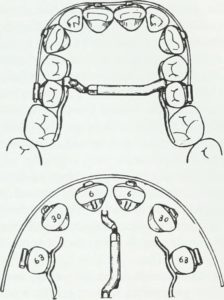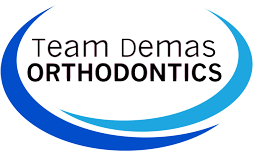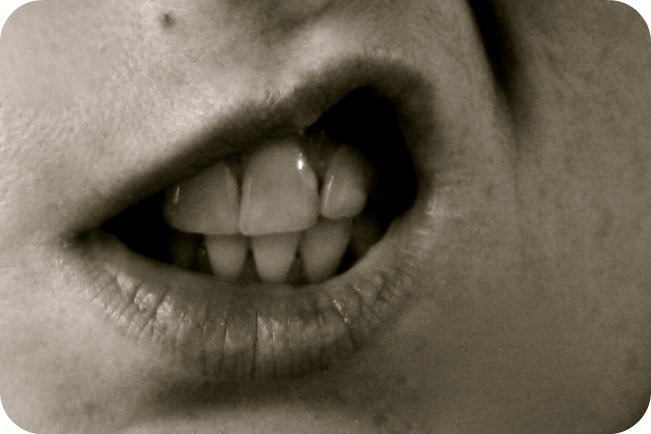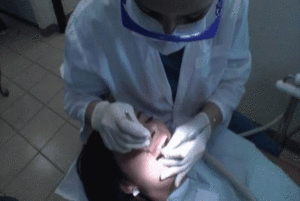What is a palatal expander?
A palatal expander is an appliance that is used to widen the upper jaw. Other names for it include rapid maxillary expansion appliance, palate expander, orthodontic expander, Haas, or Hyrax.
This device is custom made for each patient from molds taken of their mouth. It fits on the upper teeth towards the back of the mouth. It is made of two halves that are secured together by a screw in the middle. The screw is turned with a special key, usually once or twice per day for a set period of time. This turning is done by the patient or caregiver, and usually, causes only minor discomfort for a brief period.
As the appliance expands, via each turn, the pressure is placed on the bones on the top of the mouth, the palate. The palate is made up of two bones that do not fully fuse together until the teenage years. Thus, the palatal expander helps the bones to move apart while forming new bone growth, which will help the upper jaw increase in size.
Who should wear a palatal expander?
The palatal expander is usually worn by children. When teeth are crowded, or if there is a cross bite observed, the palatal expander can be helpful. It works for children because of the way the bones of the mouth grow and develop.
The expander is most beneficial to children under the age of about 14 to 16 years old. Children’s have actually two bones on top of their mouths. The bones fuse together during puberty. Prior to puberty, the two bones can be separated to make the upper jaw bigger. As they separate, new bone forms allowing the gap to fill in, and become permanent. Once the bones have fused, however, only surgery can pull them apart, so treatment prior to this is recommended.
Why is a palatal expander used?
The uses of a palatal expander include widening of the upper jaw to make room for all the teeth to erupt on their proper locations. It is also used so that the bottom and upper teeth will fit together better.
A palatal expander can help make room for blocked or impacted adult canine teeth. When the upper jaw widens, the teeth will then have room to move into the proper locations in the mouth. All teeth will have a better chance of erupting in the proper alignment when the jaw is expanded to a size that will meet the needs of erupting teeth.
Additionally, a palatal expander can help in cases where the teeth are not properly aligned. For example, if a child has a cross bite, where the lower teeth bite on the outside of the upper ones, expanding the upper jaw can help make room for the proper bite. Also, people with a crossbite may find that they have a hard time making their back teeth meet together at all to chew. They may even misalign their jaws to chew, which can cause further problems in the future, if not corrected. A palatal expander can work to make the teeth meet in the proper places for the best look as well as for proper functionality.
What are Retainers?
What to expect from wearing the palatal expander?
The palatal expander appliance is installed in the orthodontist’s office. While there are devices that are removable, these are often not recommended because the compliance of use is not often good. Additionally, they are easily lost or simply forgotten, not helping the expansion at all.
The orthodontist will attach the expander with bands or plastic bonding to the upper teeth. While there may be some initial discomfort, most patients do not find it painful. Some report feeling pressure on the teeth, the roof of the mouth, or behind the nose. This is simply the device expanding the palate. Some also report that the tongue is initially scratched by the device. This will eventually heal and won’t become a problem as time goes on.
For the first day or so after the palatal expander is attached, you may want to provide a soft diet for your child. Food like yogurt, soup, ice cream or mashed potatoes that do not have to be chewed will help with the initial discomfort the child may feel. After about two days, normal eating can resume with the exception of unusually sticky candies that can get caught in the screw of the expander. Those should be avoided.

Photo credit: Internet Archive Book Images via Foter.com / No known copyright restrictions
You may notice several things when the palatal expander is first put in. First of all, the child may talk differently. This is because there is a foreign object in their mouth and they have to learn to talk about it. After a few days, it will be more natural. Second, you may notice excess saliva that the child is slurping or, perhaps, dripping. Again, this is natural when a foreign object is placed in the mouth and will subside after a few days. The most noticeable feature, though, may be the gap between the top two front teeth. This is a sign that the palatal expander is working. The gap will naturally close as the process continues, but is a good sign that the expander is doing its job.
The orthodontist will instruct you on how often to turn the screw of the expander. Usually, the child will be given
some time to get used to the device before any turn is made. Turning the screw is quite simple. Simply use the tool provided by the orthodontist, insert it into the screw, and turn the prescribed number of turns. Often, there will be two weeks of turning and then some time to allow for stabilization. The orthodontist will decide how much turning is necessary. The device will remain on for anywhere from two months to a year or more, depending on many factors.
Call Today!
If you are concerned about your child’s teeth, or if your regular dentist has recommended an orthodontist consultation, please call or visit Team Demas Orthodontics today. The best place for an Orthodontic Appliance Southington can offer is here. You can reach us by phone at 860-276-0333.
Team Demas Orthodontics
27 Meriden Ave #2a, Southington, CT 06489, USA
Phone: 860-276-0333




